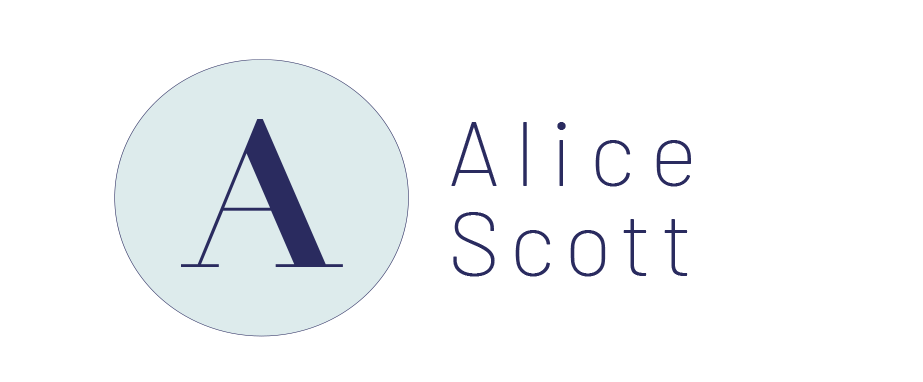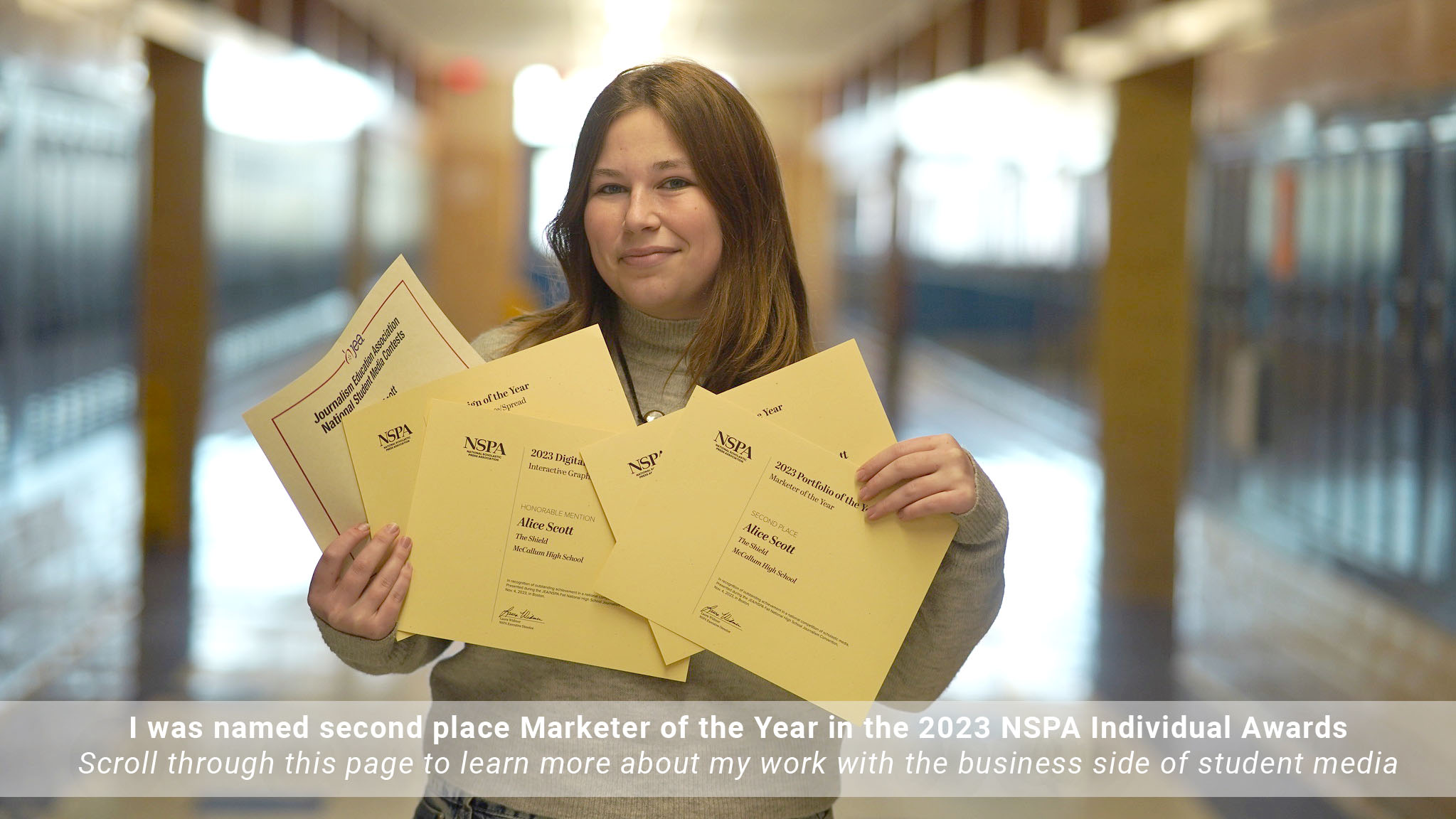introduction
Coming into the 2023 school year as co-editor-in-chief of the The Shield, no one prepared me for the fact that, by definition of the role, I would be producing less content. As an editor and a leader first, my writing, photography and design would take a backseat.
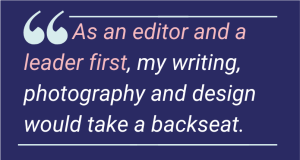
This was a hard pill to swallow for someone who had built an extensive portfolio of work over the past seven years as a student journalist.
But I quickly learned that there was much to do behind the scenes and that the value of that work paid off with a different kind of reward. It could be seen in the little conversations with new staffers. The late nights spent fixing folios. The lessons and activities planned to educate and motivate the staff.
In spite of the benefits of this work, it still felt disappointing when I noticed that I had half as many bylines as I did when I was just starting out as a freshman on staff.
I was eager to have an impact on the face of our publication. Our print paper had a fresh new look thanks to the prior year’s EICs who updated our style guide for the first time in years. And our website and Instagram account, which had just reached over 5,000 followers, were both posting popular new content daily.
We were not struggling in our image or content production, but rather in our ability to physically meet the demands of the content we needed to produce. The truth was, creating a high-quality publication costs a lot of money and MacJournalism found itself having to pick and choose between camera repairs or contest submissions or sending students to conventions, despite the staff earning those opportunities.
It was no secret that our news program did not have a dedicated source of income.
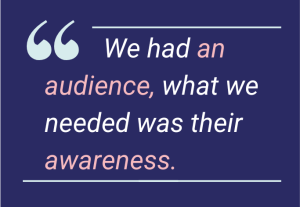
We discontinued subscriptions in March of 2020, giving everyone at McCallum access to The Shield when it came out amidst a global pandemic. We still mail copies of each issue to all students free of charge because it never felt right to switch back, even after returning to campus.
I knew where I could make my mark.
Our program needed funds, yes. But I wanted to build something bigger than that. The mission of MacJournalism is to connect the school. Our publications are some of the only places where you can see sports and student clubs and the arts all in the same place.
We had an audience, what we needed was their awareness.
My main goal with these marketing campaigns was to inform the school community about the work MacJournalism does and the challenges that come with it, in hopes of creating a different kind of appreciation and support for the program.
I wanted to give the community — our audience of MacJ readers — a reason to be proud of the work we do.
work samples
The I ❤️ MacJ Campaign
Despite, our heavy social media presence, MacJournalism has never held a promotional fundraiser. Most years, parents of staff members would come together to donate money to the program, but MacJ had never formally asked the community for money.
I started out planning our messaging by setting up a fundraising website hosted through LivingTree.org that would allow us to receive contributions online. I wrote original copy to feature alongside images of The Shield staff in action.
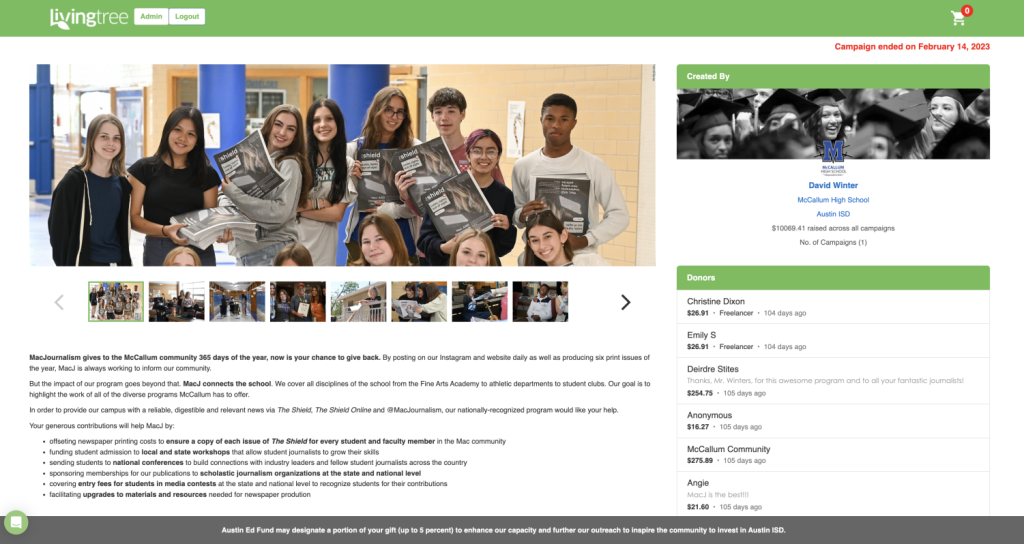 Though donors could contribute any amount, I also created a tiered donation scale to give them a frame of reference for our needs.
Though donors could contribute any amount, I also created a tiered donation scale to give them a frame of reference for our needs.
Tiered donation scale:
Publisher – $1,000
Editor – $500
Journalist – $250
Patron – $100
Contributor – $50
Freelancer – $20
After setting up the donation site, I got to work creating materials to promote the campaign on campus. For the initial phase of the fundraiser, I designed custom MacJ tattoos and flyers.

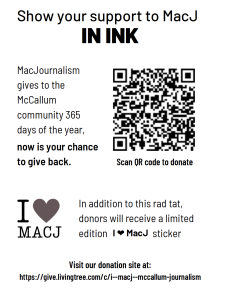 The day the fundraiser was launched, we prepped the flyers and tattoos, then took them room to room to build buzz about the campaign and distribute flyers to students with information that linked to the fundraising site. Then, staffers went classroom to classroom to inform students of the campaign and hand out flyers. The tattoos were stapled to flyers and put the “fun” in fundraiser by serving the dual function of showcasing support for MacJ as well as serving as a reminder to students about the fundraiser.
The day the fundraiser was launched, we prepped the flyers and tattoos, then took them room to room to build buzz about the campaign and distribute flyers to students with information that linked to the fundraising site. Then, staffers went classroom to classroom to inform students of the campaign and hand out flyers. The tattoos were stapled to flyers and put the “fun” in fundraiser by serving the dual function of showcasing support for MacJ as well as serving as a reminder to students about the fundraiser.
The hope with the tattoos was that students would wear them on their bodies, and when they got home would have a visual reminder to contribute to the campaign. We couldn’t have imagined how popular they would be, with students, teachers and administrators alike literally adorning themselves with MacJ tattoos from head to toe.
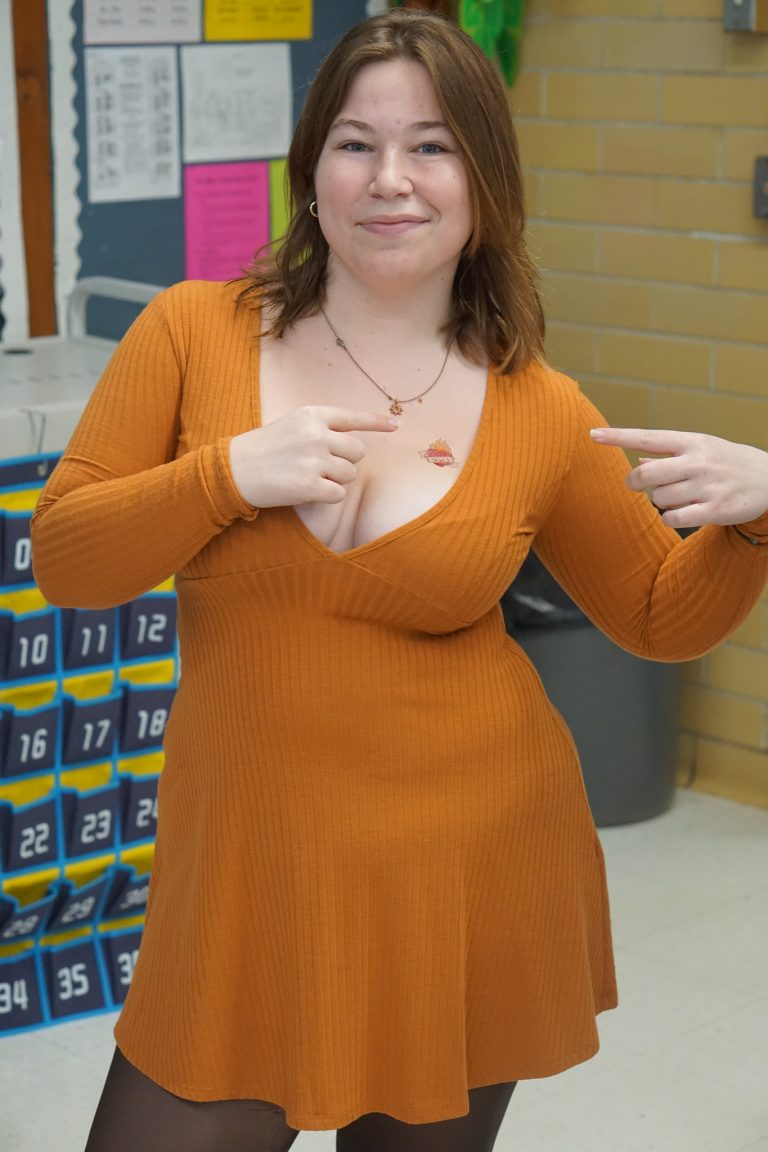
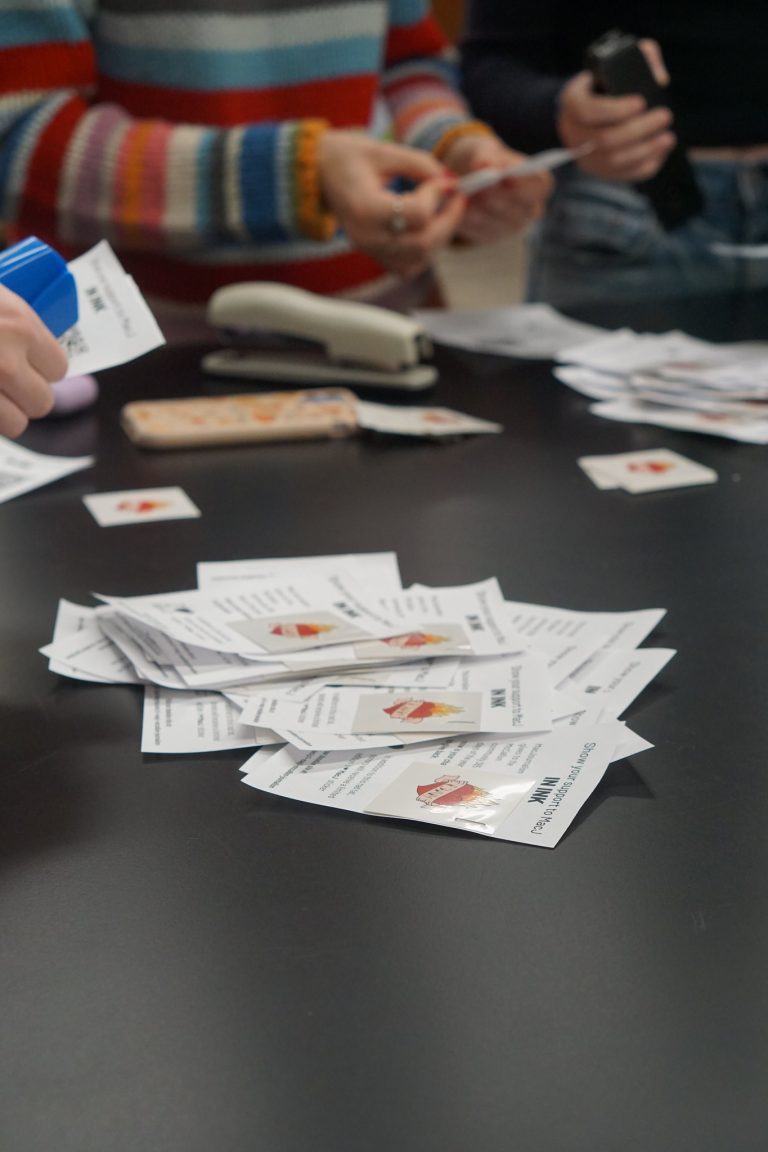

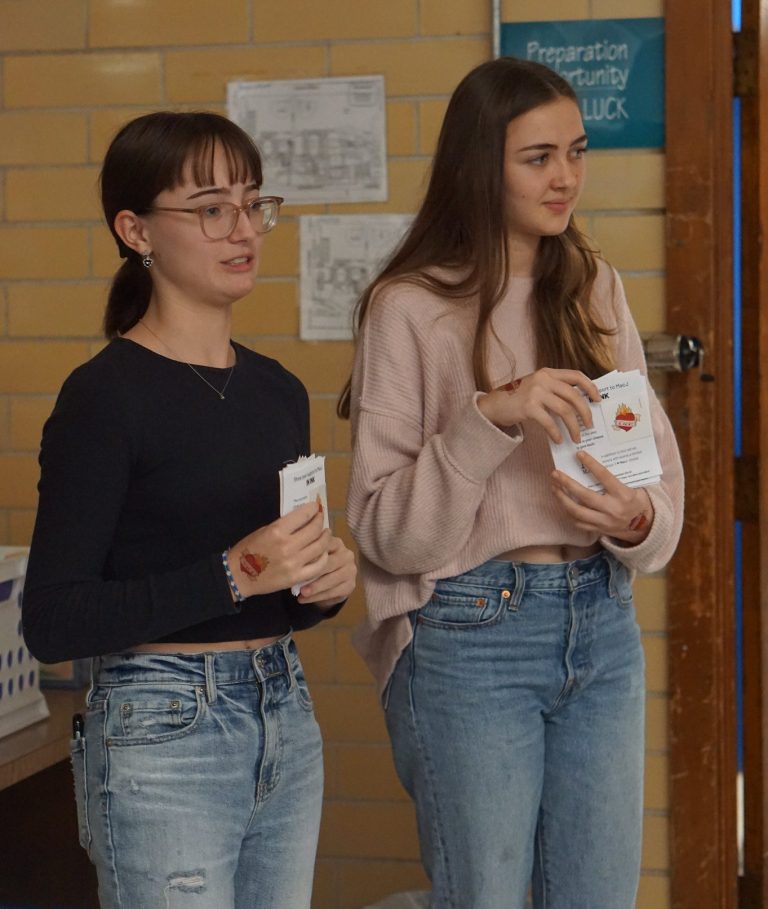
I kept the newspaper room stocked with tattoos and flyers throughout the fundraiser drive for those with questions about how to donate. Within one week we had nearly $2,000 in donations, raising almost 25% of our original goal within the first week.
The campaign’s early success wasn’t just due to the outreach done on campus. We promoted the campaign on our Instagram account @macjournalism and encouraged staffers to promote the drive on their personal social media accounts. Earlier in the year, we took note of the way the New York Times promotes articles by posting links on stories and began using that in our promotion of our website. We used a similar strategy when promoting the fundraiser by specifically suggesting staffers share the link through stories.
One challenge we experienced as we were getting started was that students on newspaper staff had difficulty finding the words to seek community support. To help, I drafted two letters, one for business contributors and another for families and friends that staffers could use when soliciting donations.
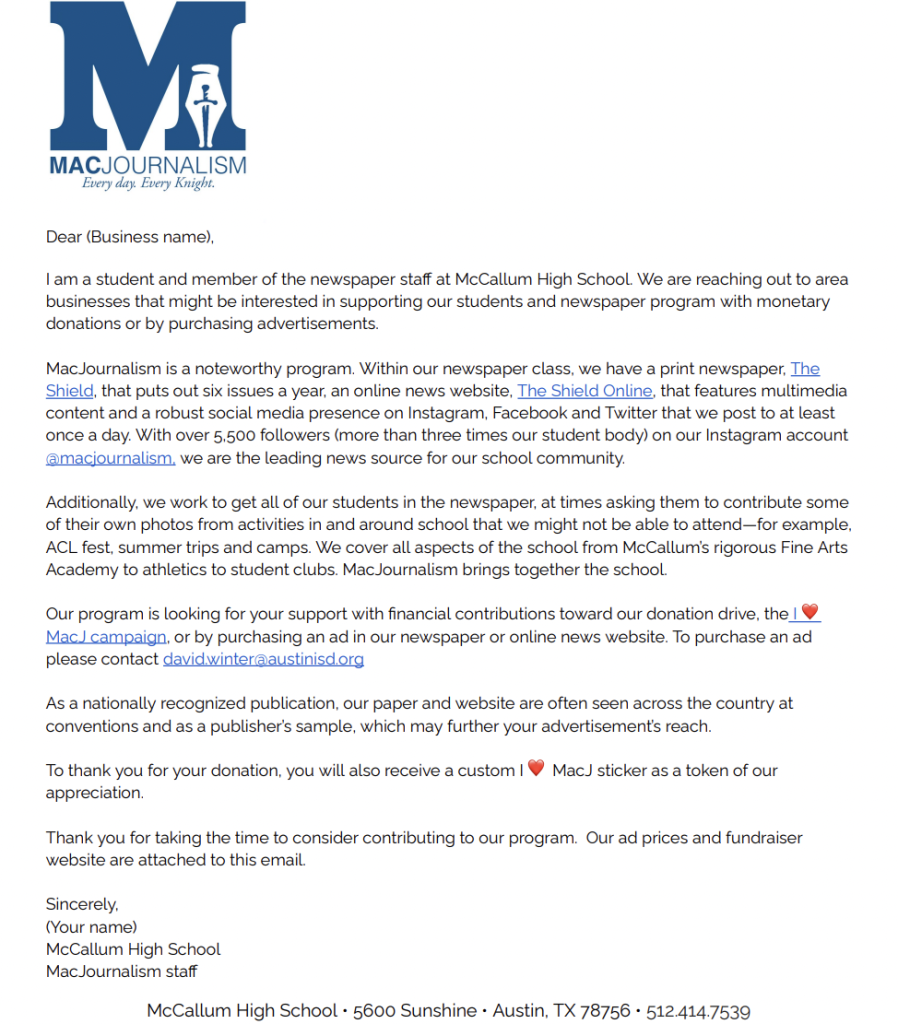
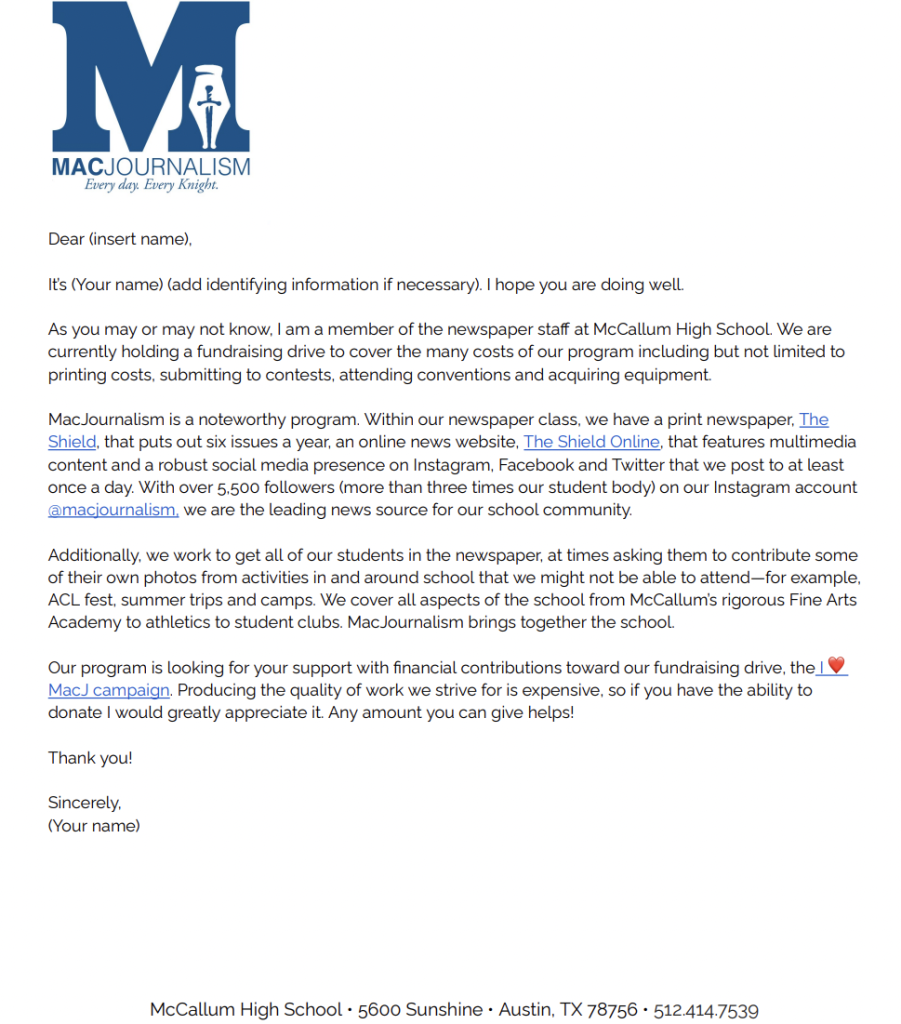
As donations started to come in, I took time to hand-write personal thank you notes to each of the contributors no matter what size the donation and sent them (as promised) an I ❤️ MacJ sticker for their laptop, water bottle or car window.
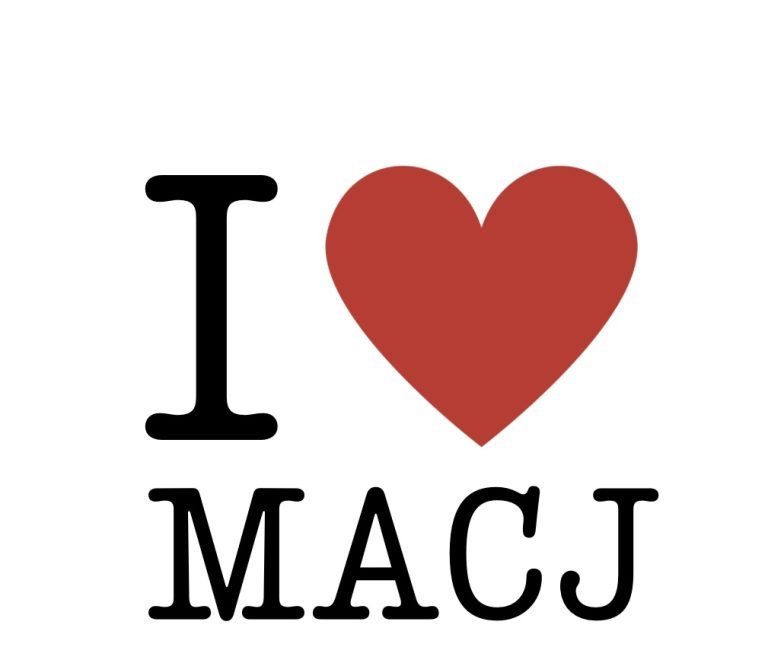
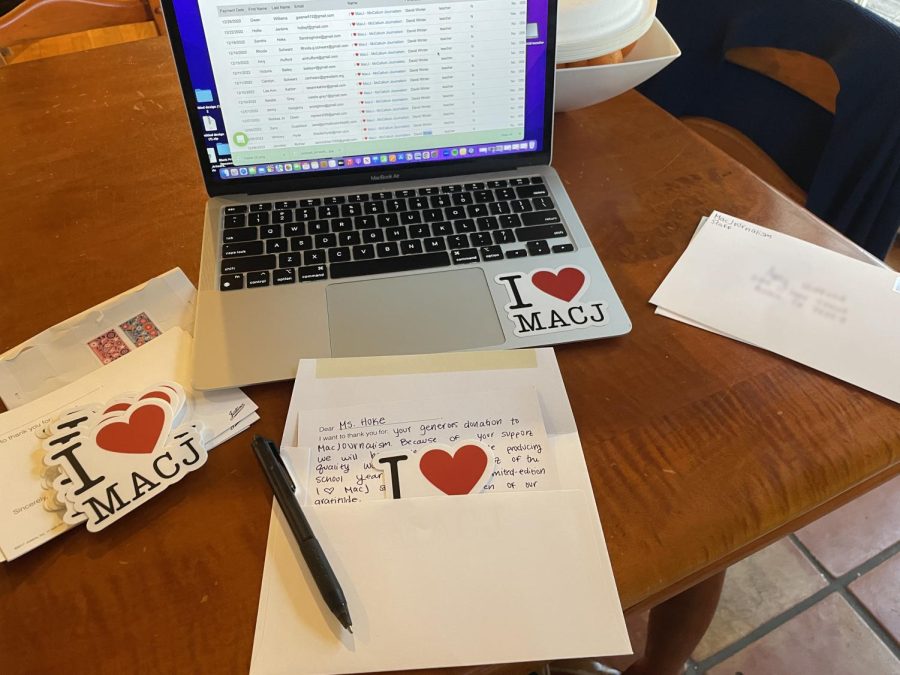
The fundraiser took off with a strong start in December raising, $4,000 of the $10,000 goal. However in January, it seemed to plateau, with contributions just under $650 donations. To promote the campaign ahead of its Feb. 14 deadline, we made a 15-day push on social media, highlighting 15 reasons to support MacJ and encouraging our community to share the love ahead of Valentine’s Day. This gallery features six of the 15 posts — some of my favorite ways that MacJ provides quality journalism to our community. You can find all 15 on Instagram, @macjournalism.
Instagram will load in the frontend.
Instagram will load in the frontend.
Instagram will load in the frontend.
Instagram will load in the frontend.
Instagram will load in the frontend.
Instagram will load in the frontend.
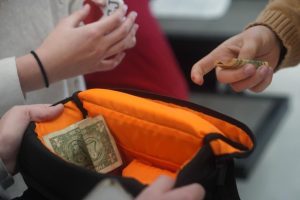
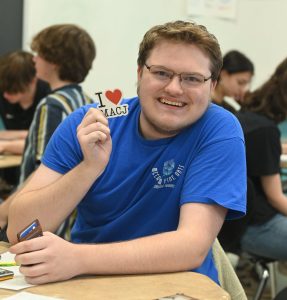 By the morning of Feb. 14, we were roughly $500 short of our goal, so we took to the campus, encouraging students to drop whatever spare change they had into our camera bags to get their I ❤️ MacJ sticker. The effort earned $275.89, inching us closer to the final tally of $10,069.41.
By the morning of Feb. 14, we were roughly $500 short of our goal, so we took to the campus, encouraging students to drop whatever spare change they had into our camera bags to get their I ❤️ MacJ sticker. The effort earned $275.89, inching us closer to the final tally of $10,069.41.
The presentation below compiles detailed Instagram insights from our 15-post social campaign as well as analytics from LivingTree that document the number of donors and funds raised. Note: Individual crowdsourced contributions made on Feb. 14 were entered in as only one of the 104 donors, under “McCallum Community.”
Business advertisements
After a successful year of fundraising, I wanted to make sure to build on our new financial foundation. Going into the 2023-24 school year, I prioritized finding a consistent income source for The Shield — advertisers.
In theory, The Shield has always been open to advertisers, but since the pandemic, there hadn’t been a strong push to sell them. With no real precedent set for how to consistently promote ad sales, it was placed on the back burner. I knew we needed to change this.
One of the main adjustments that my co-EICs and I wanted to make for the 2023-24 school year, was an update to the grading system — the perfect way for me to create a motivation for staffers to sell ads. Our new grading system had a clear outline of work expectations: Each staffer needed to write and create (print and web) designs for two stories each issue cycle. On top of this, every week they are required to complete a “once-a-week” assignment such as writing a caption, covering an event or selling an ad.
Below is a the presentation we gave to our adviser Dave Winter detailing our plans for the 2023-24 school year (edited to only showcase the details about the grading policy).
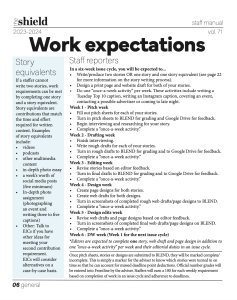 Although we ended up changing several aspects of the grading policy, the key change that we hoped would help sell ads more consistently was the implementation of once-a-week assignments for smaller tasks like writing Instagram captions. These assignments were meant to guarantee that staffers were always contributing beyond just writing stories to ensure the success of all of our news platforms. We also knew that some staffers may prefer certain options over others, so instead of writing a caption or covering an event, they could take advantage of a different once-a-week assignment, like selling an ad.
Although we ended up changing several aspects of the grading policy, the key change that we hoped would help sell ads more consistently was the implementation of once-a-week assignments for smaller tasks like writing Instagram captions. These assignments were meant to guarantee that staffers were always contributing beyond just writing stories to ensure the success of all of our news platforms. We also knew that some staffers may prefer certain options over others, so instead of writing a caption or covering an event, they could take advantage of a different once-a-week assignment, like selling an ad.
We announced this new policy at the beginning of the year and made a page detailing work expectations in our Staff Manual. Mr. Winter managed the assignment submissions through BLEND (AISD’s version of Canvas) and after a few issue cycles, our new staffers were fully adjusted to the once-a-week requirements, which is a primary factor in our increase in advertisers.
In the 2022-23 school year, we sold only one advertisement in both our print and web publications. Now, not even all the way through the 2023-24 school year, and we have sold 14. Click through the presentation below for more details.
Although there were some other factors that likely helped us increase our advertiser presence, including social media shoutouts to businesses who purchased ads in our publication and posting about advertising on both our website and Instagram page, I think it was ultimately the implementation of once-a-week assignments that encouraged staffers to go the extra step to reach out to businesses and sell ads.
Instagram will load in the frontend.
Instagram will load in the frontend.
Social media and web promotion
Because so much of The Shield content and reporting occurs on social media and our website, learning to cross-promote our platforms has become an integral part of my role as editor-in-chief. At the beginning of the 2022-23 school year, I was looking to improve the way The Shield promoted web stories on Instagram. At the time, we were making static posts that included the featured image and first paragraph of the story we were teasing, which then instructed viewers to click the link in our bio to read more. This was not generating the results we were looking for because it required viewers to be interested enough in the story to leave the post they were viewing, go to the @macjournalism profile and click the link in our bio. I noticed the way The New York Times promoted their articles, by utilizing Instagram Stories with a clickable link that takes readers directly the the website post. I suggested this idea to our staff, and design editor Sophie Leung-Lieu decided to spearhead the project which ended up reshaping our promotion of our website. Below are a few examples.
These reels helped modernize our social media activity and improved our overall engagements. The presentation below highlights analytics for our website and social media engagement from the 2022-23 school year.
FINAL THOUGHTS
Having an engaged audience and a strong social following doesn’t necessarily mean that your community is going to step up and support you financially, either in the form of business advertisements or donations — two things that The Shield had never really asked of its readers.
And unfortunately, scholastic journalism seldom finds itself as the No. 1 priority for public high schools in Texas. My district, Austin ISD, went into the 2023 school year with an $87 million deficit. Funding high school newspapers just couldn’t be a primary concern.
But we wouldn’t know until we tried.
Once we did the work to inform our readers of our need and create the platforms for them to contribute, community members stepped up to support MacJournalism in a big way. This reminded me of the value of asking for help when you need it and reinforced the idea that creating a publication for the community is a relationship that goes both ways.
Recognitions: Second place – Marketer of the Year, NSPA Individual Awards (2023)
